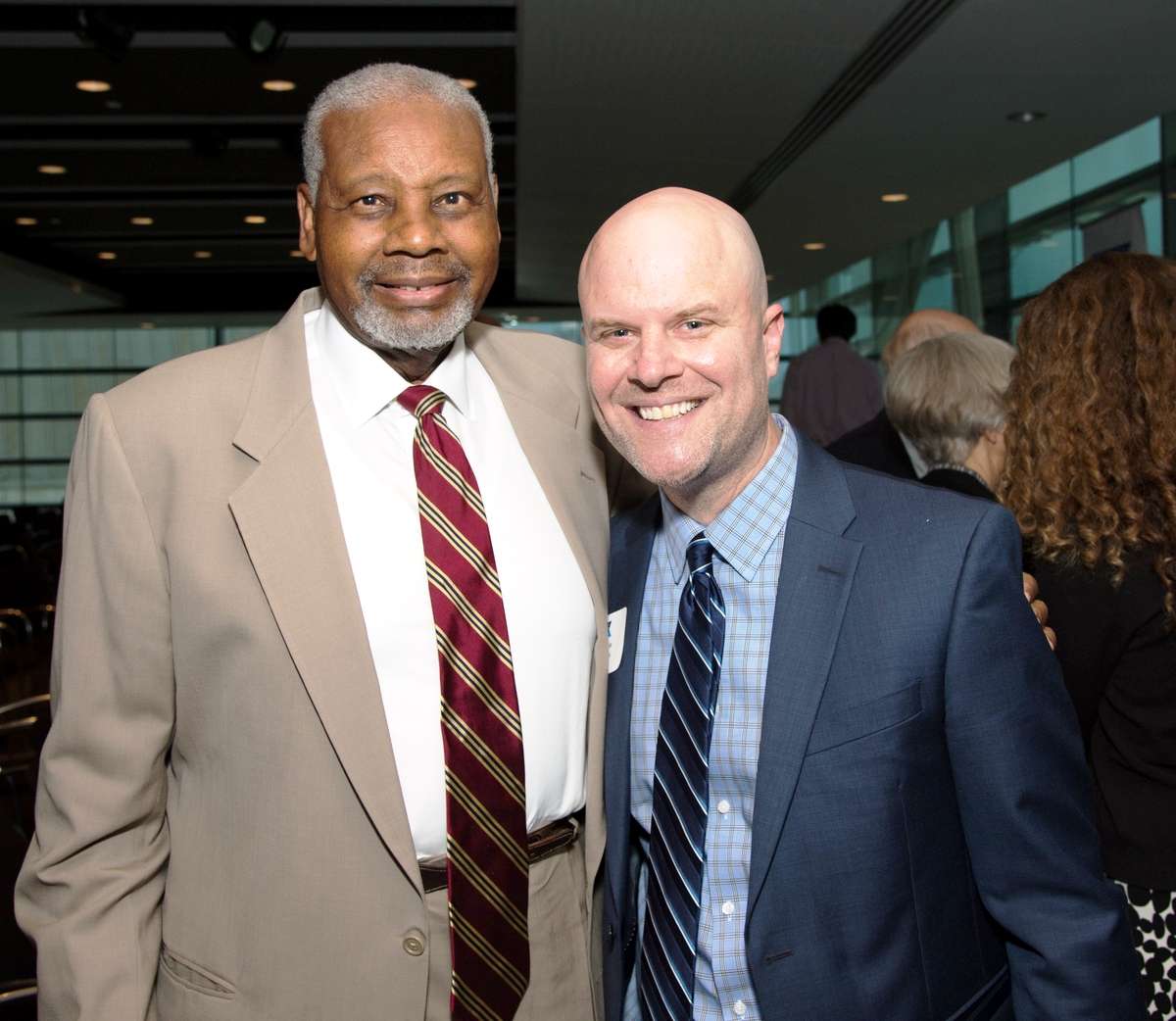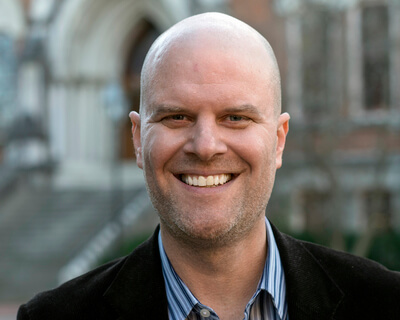 |
| Andrew Maraniss and Perry Wallace at the RFK Book Awards, where the adult version of Strong Inside received a special recognition in 2015. |
When I set out to write the original, adult version of Strong Inside, I felt pressure to satisfy two discerning audiences: historians and sports fans. These folks may not hang out in the same pubs, but they both know their stuff and aren’t afraid to call you out when they think you’re wrong.
I’m pleased the book, a biography of Perry Wallace, the first African-American basketball player in the Southeastern Conference, succeeded on both fronts. It debuted on the New York Times bestseller list in both the sports and civil rights categories, earned two major civil rights book awards, became the all-freshman read at Vanderbilt University, and may have been the first book covered by both the SEC Network and NPR.
But now, with Strong Inside out in a middle grade format, I may have the most skeptical readers of all to satisfy: 12-year-olds.
Talk about a tough crowd. And none more important audience.
I’ve seen the news that middle school suicides at an all-time high. I’ve read the reports about incidents of racially motivated bullying increasing since the election of Donald Trump. I’ve learned the term “reluctant reader.” I feel a country divided between rural and urban, right and left, white and black.
Yet in Perry Wallace’s story, I see an opportunity to deliver a dose of hope. Chances are, you’ve never heard of Perry Wallace. I doubt I’ll meet a middle schooler who knows Wallace’s name. But his story could not be more important at this time in history, when racism—subtle and overt—was at the heart of a winning presidential campaign.
Wallace was no ordinary basketball player. Yes, he was a star on the court: three-time high school state champion, team captain at Vanderbilt, NBA draft choice. But he has always been so much more than an athlete. As a kid, he taught Sunday School, practiced trumpet four hours a day, studied his four older sisters’ college textbooks. He was the valedictorian at Nashville’s all-black Pearl High School, earned an engineering degree at Vandy, and graduated from Columbia University law school. He watched Nashville’s 1960 lunch-counter sit-ins as a 12-year-old, met with civil rights figures Martin Luther King Jr, Stokely Carmichael and Fannie Lou Hamer while in college. Today he’s a professor of law at American University.
And all along the way, he’s overcome gigantic obstacles, seen the worst of human nature, feared that racists in a small southern town would shoot him, been taunted as a token by some black observers. He’s the most courageous—and smartest—person I’ve ever met.
I’m hopeful young students of color will discover a character they recognize and admire. I’m hopeful white kids will learn something about race and racism, empathy and understanding. I’m hopeful that kids who love sports, but not books, will find a story they can’t put down. I’m hopeful that boys and girls who don’t care about sports at all will identify with Wallace’s intellect, his sensitivity, his challenges to overcome bullying and isolation.
Call that a lot to hope for from just one story, but I know the power of Perry Wallace. I first interviewed him when I was just a student myself, a sophomore at Vanderbilt in 1989 working on a paper for a Black History class. I’ve dedicated more than half of my life now to telling Perry Wallace’s story. And it’s because I know how meaningful that story can be to people that I paid close attention to the advice I was given by those who guided me through the process of adapting this book for young readers. Professor Ann Neely at Vanderbilt, bestselling author Ruta Sepetys, and editors Brian Geffen and Michael Green at Philomel said: Respect the audience. Don’t dumb-down the story. Don’t sanitize it.
And that was on top of the advice I had already received from my father, the Pulitzer Prize-winning author David Maraniss: Do the real work, the reporting, the research, the interviews. And the advice from Perry Wallace himself: Just tell the truth.
Authors have always had the opportunity to bring light where there is darkness, and in this new America, we have a special responsibility to counter hate and bluster with truth. Kids, of all people, still demand it. And I know they deserve it.
Follow Andrew Maraniss on Twitter @trublu24 and visit his website at www.andrewmaraniss.com. Strong Inside: The True Story of How Perry Wallace Broke College Basketball’s Color Line was published by Philomel on Dec. 20, 2016, and is a Junior Library Guild selection.






